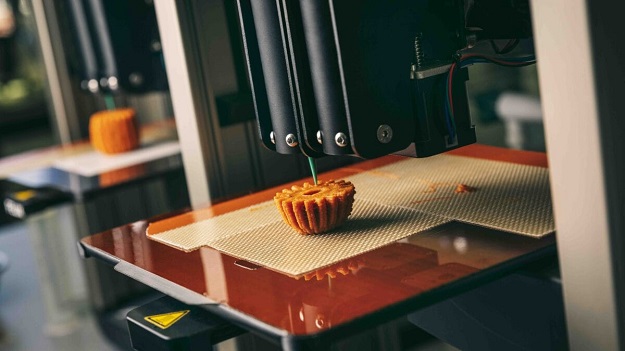3D printing sounded like a cool idea for people who like to make and collect art such as little statues and odd items. However, it has evolved over time and has become so useful that it’s even applicable in the food industry of all places. According to Xometry, 3D printing started being used in the food industry as far back as 2006, and it’s improved in many ways over the years. If you’re interested in using 3D food printing in your restaurant or food-related business, you probably want to know more about how it works and how you can use it. Keep reading, because that’s exactly what we’ll be discussing in this article.
Benefits of 3D-Printed Food
3D printing has many benefits, such as allowing for the automation of food preparation processes. You can let the printer build some of the food you need to make and focus more on the quality of other parts of food preparation. Using a printer also allows for better and more precise ingredient control because these machines use precisely controlled stepper motors. You can also be a lot more creative with the food you print, as it’s easier to make complex food products with a 3D printer.
Ingredients Suitable for 3D Food
Using agrochemicals in the food industry (chemical agents that improve the nutrients of crops) is nothing new, and American agrochemical expenditures at the producer level reached almost $9 billion in 2012. This is an indicator of how important quality is in the food industry, and not all ingredients can be used to make 3D food. Here are the most commonly used ingredients you can expect to use for 3D food printing:
• Sugar
• Colored Food Ink
• Gelatin-Based Ingredients
• Cake Icing
• Dough
• Cheese
• Mashed Potatoes
• Chocolate
• Cultured Meat
How 3D Printing Food Works
Of course, if you’re going to use 3D printing for business purposes, you need to understand how it works. How would you promote your services or products if you didn’t know what you’re talking about, after all? According to High Rock Studios, engaged audiences spend 76 times more on advertised services and products online, but they want to engage with companies that are knowledgeable and can be trusted.
As for how 3D food printing works, there are various methods. One of the most common techniques in 3D food printing is known as FDM-style printing. This method involves using a syringe-type dispenser to deposit the food material. The food printer operates by maneuvering the dispenser’s head across the building plate, gradually constructing the food item by creating each layer in a sequential manner. Occasionally, the printed food may require additional cooking or preparation steps post-printing.
Types of 3D Printers Used in 3D Food Printing
If you plan to use a 3D printer for your business, you need to know the different options to choose from. Here are the three main types of 3D printers used for food production:
• Extrusion
• Inkjet
• Binder Jetting
You can use any of these three types, depending on your needs and budget. It’s advised that you research each type before making a decision so you can make the right choice for your business.
Examples of 3D-Printed Food
There are many food items you can make with a 3D printer. Surprisingly, you can even make beer. According to the Digital Trends Media Group, Seattle University of Washington researchers invented a way to ferment yeast with 3D printing, making it easier to create unique beers. The most popular craft beer type in America is the IPA, and you can research how to use your printer to offer this kind of beer to your customers.
Here are a few other foods you can make with a 3D printer:
• Meat Substitutes
• Chocolate
• Pasta
• Sweets
• Seafood
• Cocktails
As you can see, 3D printing is a fantastic technological advancement that continues to improve and change. You can use it in your business to enhance the service you provide your customers and increase your efficiency as well as boost your sales and profits. Just make sure you invest in a reliable 3D printer and spend enough time learning how to use it properly.

